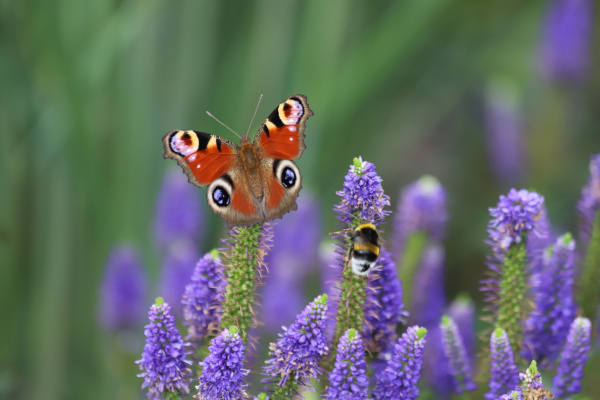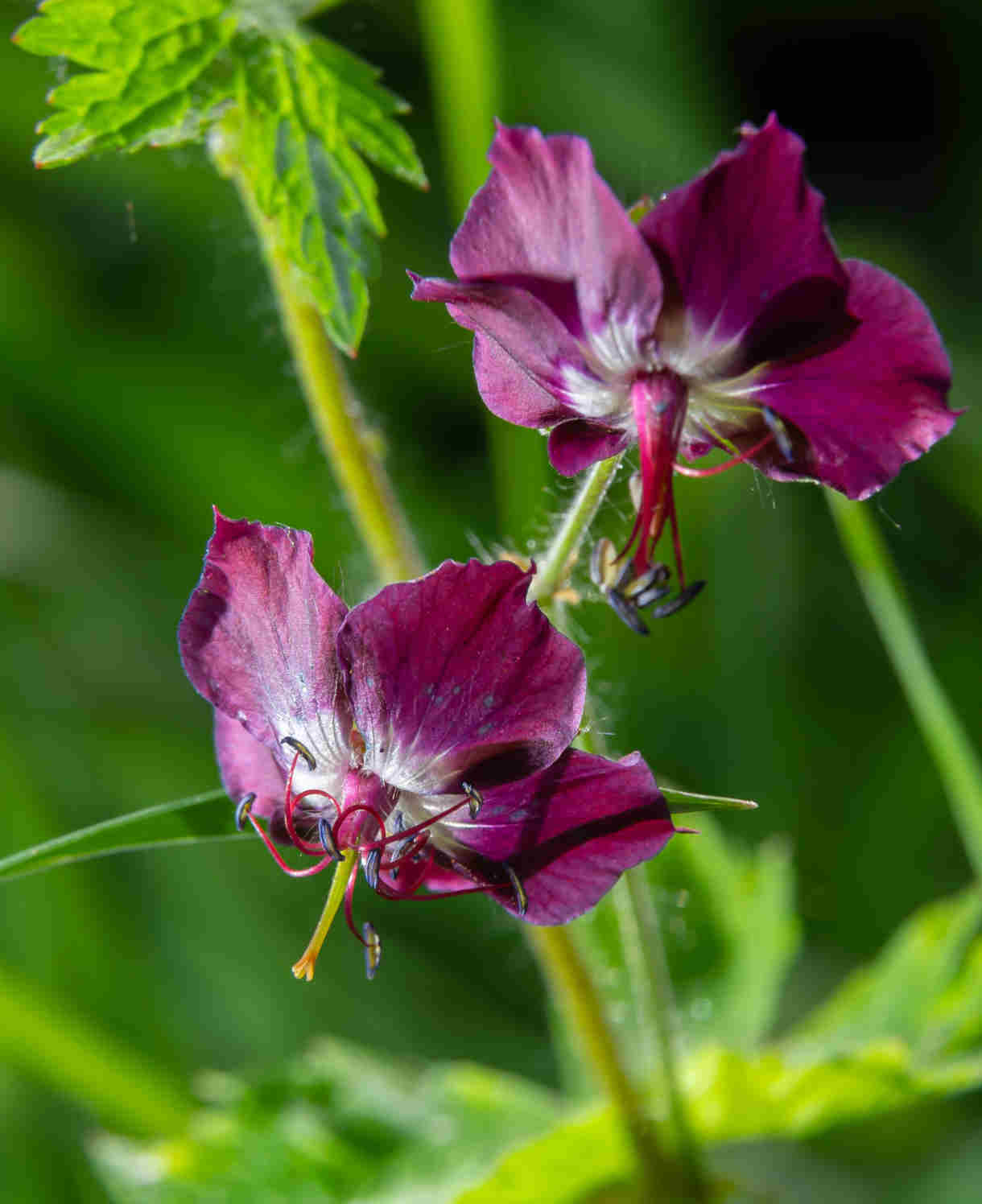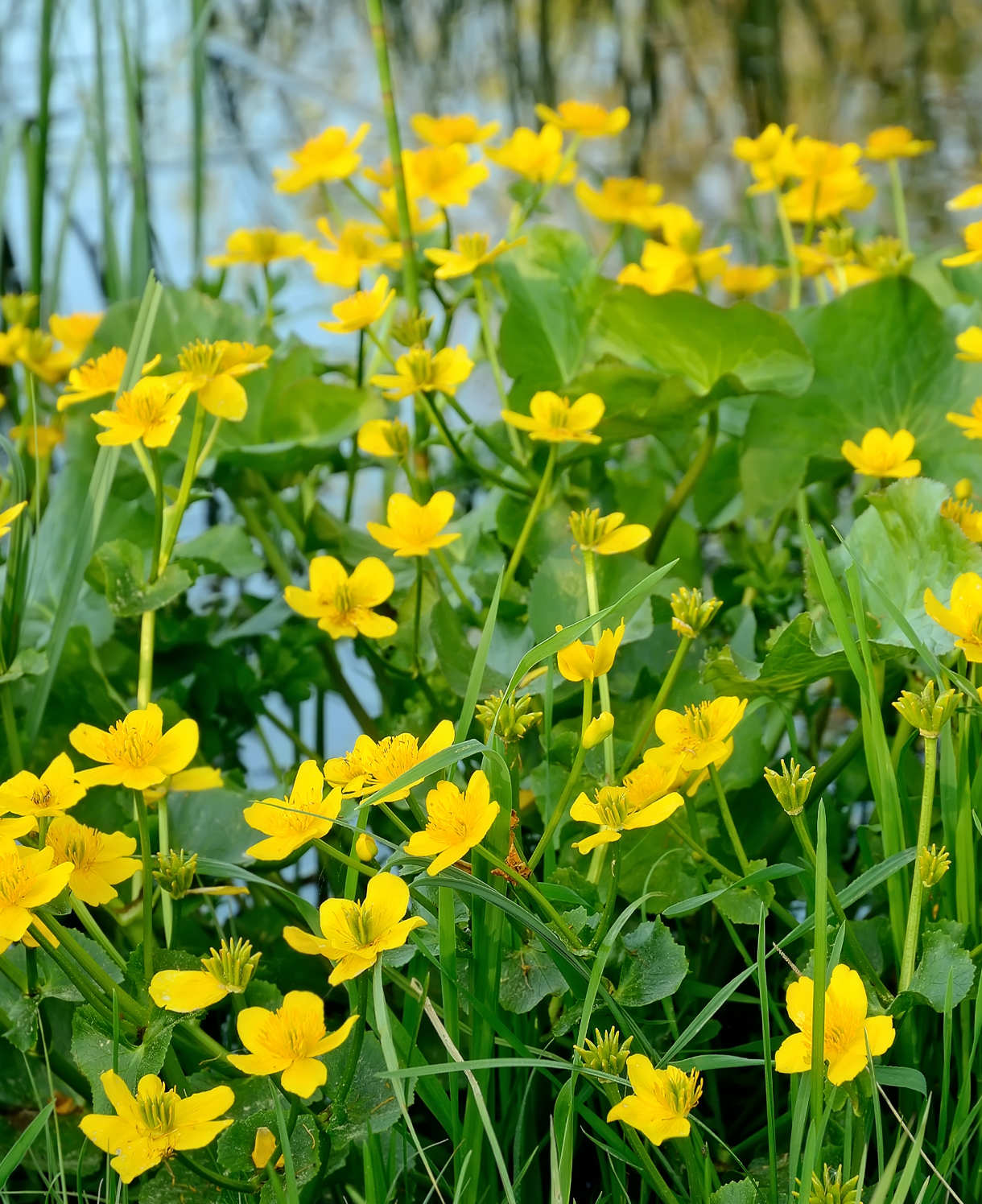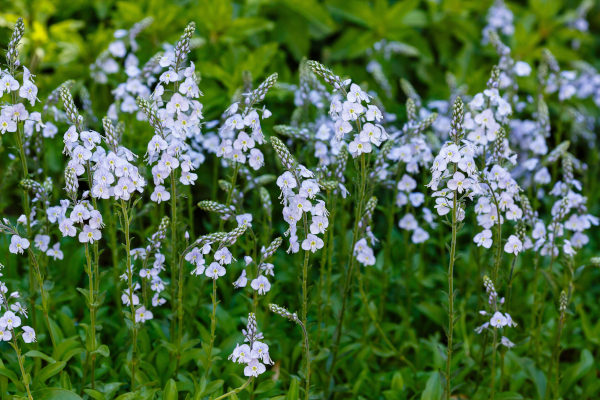How to grow Veronica
Veronica is a diverse and varied genus of around 250 species, including annuals, perennials, and subshrubs. They may produce flowers in spikes or singly, and their natural habitat can range from swamps to rocky hills.
Named after Saint Veronica who is said to have wiped Christs tears on this way to Calvery. Also known by the common name speedwell, some say because the wild flower in the hedgerows was admired by travellers, before the advent of motor vehicles, and ‘Sped them well on their way’. It was once sewn into clothing as a lucky charm on a journey.
At Hayloft, we offer a wide range of veronica; from a creeping aquatic and a low, ground-hugging variety, to several of the taller and more upright border types.

Zantedeschia is a genus of flowering plants from the family Araceae and is native to southern Africa. With a rich history dating back to the Ancient Romans, these deciduous or semi-evergreen perennials have been used as a symbol of celebration. Zantedeschia was Named after Professor Giovanni Zantedeschia, an Italian botanist.
There are two main forms of Zantedeschia: hardy and tender. Hardy forms of the plant can be grown outdoors, enjoy moist soil and full sun or partially shaded conditions - these are known as Arum lilies. Tender forms of Zantedeschia prefer being grown in containers or pots and should be brought inside over the winter - these are known as Calla lilies.
With tuberous flora in all colours from whites, yellows and oranges to deep reds and purples, Zantedeschias are not to be overlooked in any garden, as long as they have sufficient sunlight to grow in.
Ready to learn more about growing Zantedeschia? Read on for all there is to know...

Key Information
Soil pH
Position
Hardiness


Where & when to plant Veronica
Position - Most will tolerate full sun to part shade. Veronica spicata and Veronic beccabunga require full sun.
Soil - Moist and well-drained, with the exception of the marginal aquatic Veronica beccabunga which requires consistently wet soil.
Flowering Period - Mainly summer
Hardiness - Hardy
Border veronica (eg gentianoides, x media, longifolia and spicata)
For best results, plant in autumn or spring. An autumn planting can be done by those gardening in mild conditions (and broadly speaking, this is the southern half of the UK). For those liable to very cold winters, it is best to wait until spring (generally the northern half of the UK). Planting can also be carried out in summer, though be prepared to water regularly.
Avoid the two extremes of very dry or waterlogged soil.
This type of veronica is ideal for using in mixed or herbaceous borders as well as containers.
Low, spreading veronica (eg repens)
Ideal planting time and soil conditions as above.
This type of veronica is best suited to growing in cracks between paving (it can withstand light foot traffic), in rockeries, gently cascading over the edges of walls, lining paths, or underplanting roses and deciduous shrubs.
Marginal aquatic veronica (eg beccabunga)
Aquatic plants such as this should be planted when the water begins to warm up in late spring to early summer.
Veronica beccabunga is happiest planted at the edges of ponds or lakes, in water around 12cm deep. It can also be grown in any soil which remains consistently moist throughout the year, such as a swamp or bog, or in any permanently damp border.
How to plant Veronica
Border and ground-hugging varieties
In the ground
- Clear the chosen area of weeds.
- Dig a planting hole several times larger than the root ball.
- Place the plant in the hole, ensuring the top of the root ball sits level with the surface of the soil. Too low and the plant may rot, too high and the roots can dry out.
- Backfill with soil and firm in gently.
- Soak well with water.
- Mulch around the base with well-rotted organic matter.
In a container
- Choose an appropriate container, ensuring there are plenty of drainage holes.
- It can be worth potting up large containers in situ to save yourself the trouble of moving once full.
- Use a good quality potting compost with plenty of horticultural grit mixed in, and, if not already present in the compost (check the description on the bag) some slow-release plant food.
- Start by partially filling the pot with compost; enough so that when placed on it the upper surface of the root ball is about 3cm lower than the top of the pot.
- Infill all the space surrounding the root ball with compost, firming down with your fingers then adding a little more so the plant is held tight.
- Pick up the pot (if you can!) and lightly tap on the potting bench or ground a few times to help further settle the compost around the plant.
- Soak well with water.
- A mulch with horticultural grit will look attractive and help to prevent a ‘cap’ or crust forming on the top of the compost (something container plants can suffer due to the artificial nature of their watering).
Marginal aquatic varieties
Into water (using an aquatic planting basket)
- Choose an appropriately sized basket. Unless it has very fine mesh, line with hessian or polypropylene fabric to prevent the compost from washing out.
- Part fill with a specialist aquatic compost. Resist the temptation to use normal potting compost, as this contains fertilisers which will leach out into the water and cause harm to the aquatic ecosystem.
- Position the veronica in the basket so it sits at the same depth as in the original container.
- Infill around it with more of the aquatic compost, firming in as you go.
- Mulch with grit or fine gravel to prevent the surface of the compost becoming stirred up into the water.
- Submerge into the water, ensuring the top of the basket remains no more than 12cm beneath the surface of the water. You may need to weigh down with rocks until the compost becomes fully saturated, after which it should remain in place.
Into wet soil (i.e., swamp, bog, or damp border)
- Clear the area of weeds.
- Dig a planting hole several times larger than the root ball.
- Place the plant in the hole, ensuring the top of the root ball sits level with the surface of the soil.
- Backfill with soil and firm in gently.
- Mulch with well-rotted organic matter.

What to plant with Veronica
Border veronica
For best results combine the upright spires of veronica with a range of different flower forms, such as the flat umbels of orlaya and anthriscus, the open, daisy-like blooms of dahlia and leucanthemum, the rounded globes of allium and agapanthus, and the smaller, delicate textures of geranium, salvia, and phlox. Throw in some grasses such as pennisetum or miscanthus to complete the designer border!
Ground-hugging veronica
Grow in cracks and wall gaps with other similarly inclined plants such as erigeron, thyme, lobelia, Campanula portenschlagiana, and Phlox subulata.
Marginal aquatic veronica
Combine with a varied range of marginals such as Baldellia ranunculoides, Butomus umbellatus, Persicaria amphibia, and Ranunculus acris ‘Multiplex’.



How to care for Veronica
Pruning and Deadheading
Cut back border and marginal aquatic types in late autumn to early winter when growth has died back.
Our ground-hugging variety is evergreen and requires no pruning.
Watering
Border veronica
Water until established and then in very dry periods thereafter.
Container-grown plants will require regular watering throughout the growing season. Allow the top few centimetres of compost to dry out between soakings.
Ground-hugging veronica
Water until established and then in very dry periods thereafter.
Marginal aquatic veronica
Ensure plants are kept moist at all times.
Cold Protection
All of our veronica are hardy, and capable of withstanding UK winters without the need for additional protection.
Pests and Diseases
Veronica tends to be largely pest and disease free, however if conditions are too wet or too dry for the needs of a particular species, plants may develop mildew.
Following our advice above should ensure optimal growing conditions and avoid problems.
How to propagate Veronica
Border and ground-hugging veronica can be divided in autumn or spring. As well as providing new plants, this also maintains the health and vigour of existing specimens.
- Choose a day when the soil is not frozen or waterlogged.
- Dig the plant out of the ground.
- Shake off any excess soil.
- Separate the plant into sections using either swift, cutting blows with a sharp spade, or two forks inserted back-to-back with tines touching, handles then pushed together to prise the plant apart.
- Discard old, damaged, or surplus pieces, keeping healthy, vigorous material.
- Replant selected pieces where desired.
- Water well until fully established.
Marginal aquatic veronica can be divided in summer in a similar fashion.
Common Veronica questions
Is veronica evergreen?
At Hayloft we offer both herbaceous and evergreen perennial species of veronica. Check individual descriptions for details.
What colour are veronica flowers?
Depending on the species or cultivar, flowers can be blue, pink, white or purple.
Do Veronicas have any problems?
Veronicas are generally very easy to grow, with very few problems as long as they are planted into the correct place depending on variety. On occassion, if the environment is either too wet or too dry, they may suffer from either powdery or downy mildew.





